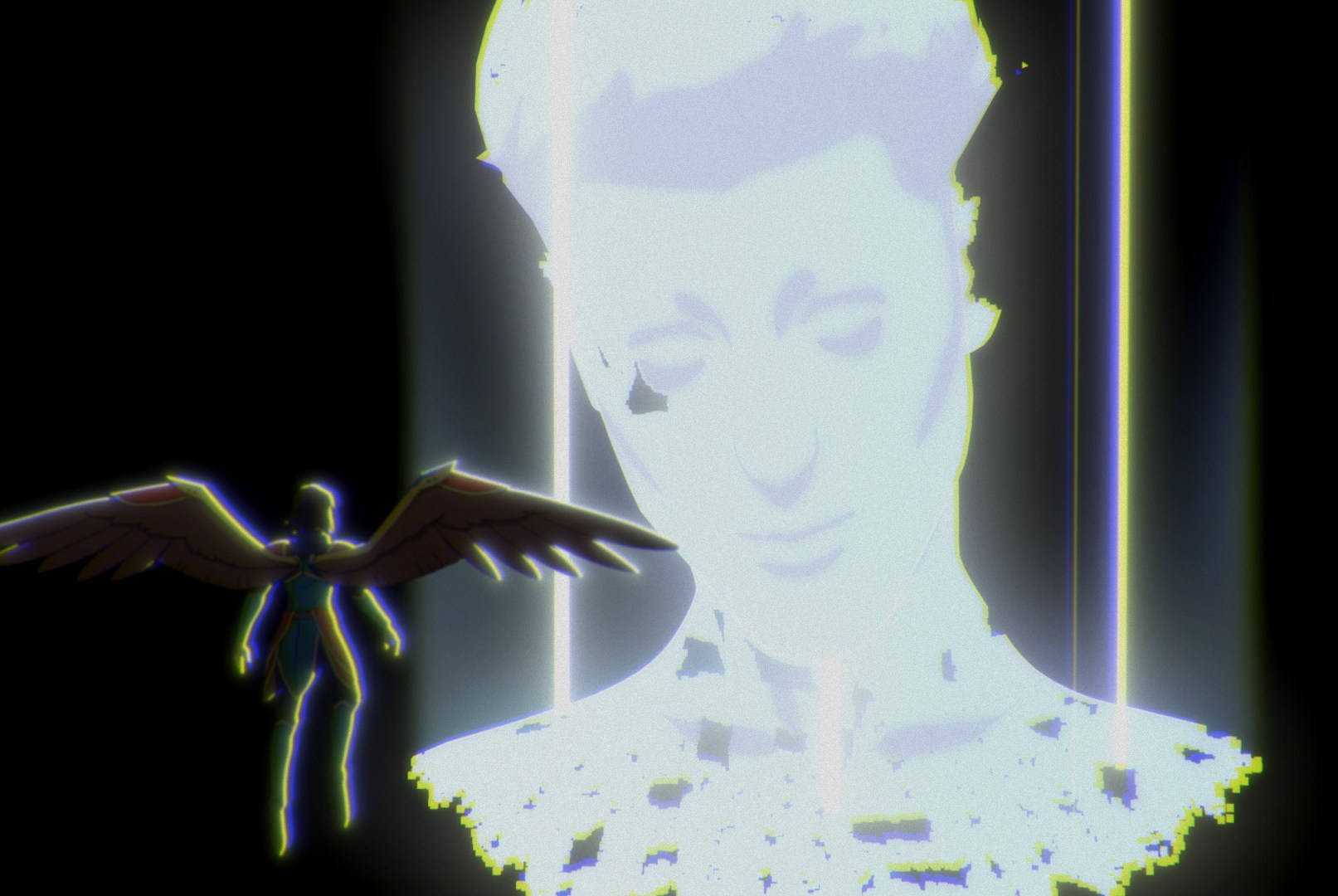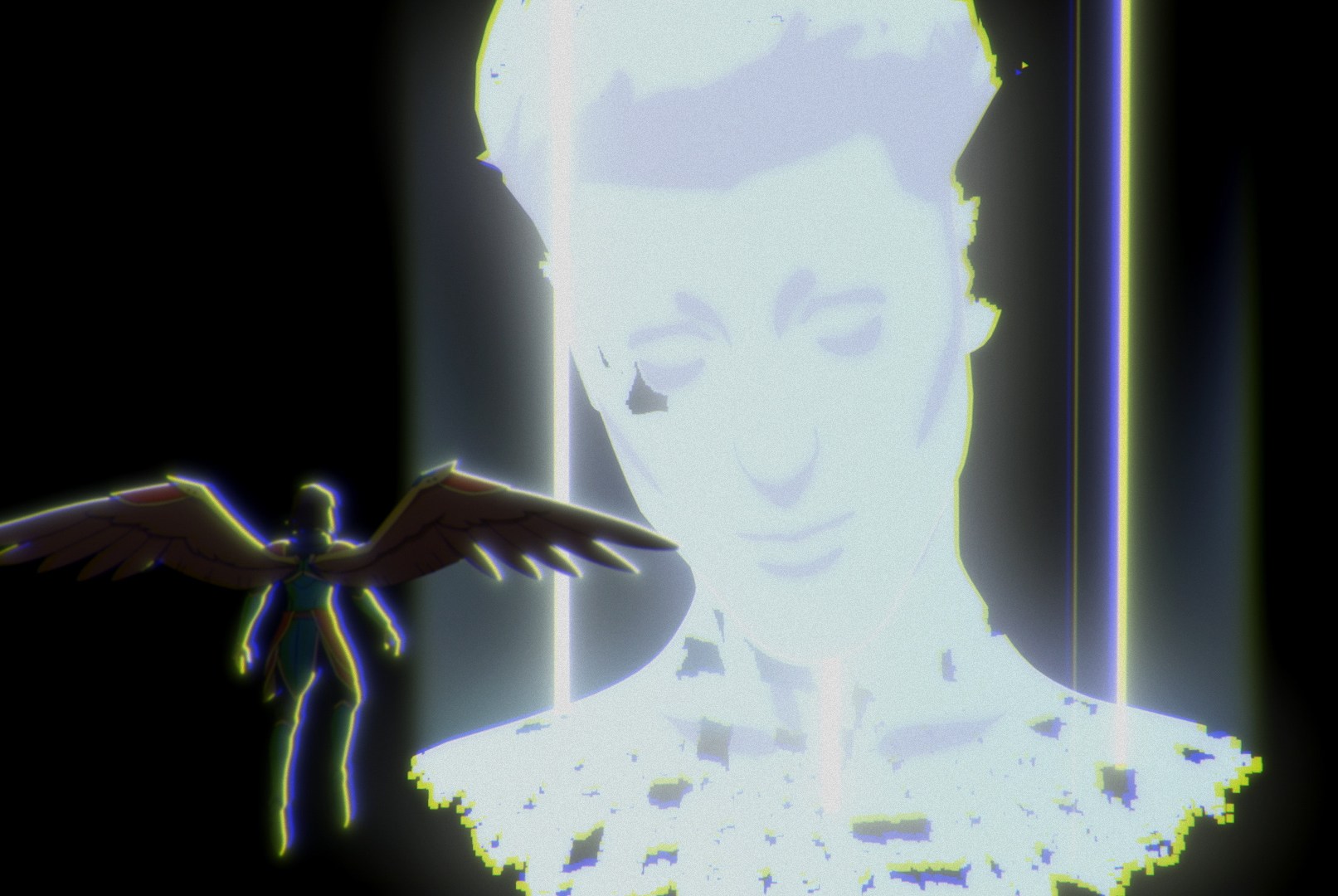## Flying Lotus Ditches the Headphones, Grabs a Chainsaw: “Ash” is His Love Letter to Gamers
Prepare for a sonic and visual assault unlike anything you’ve experienced before. Flying Lotus, the Grammy-nominated electronic music maestro, isn’t just pushing boundaries with his music anymore – he’s taking them to the next dimension with his mind-bending sci-fi horror-thriller, “Ash.” This isn’t your average film; it’s a visceral, adrenaline-pumping rollercoaster ride straight into the heart of a gamer’s wildest dreams (and nightmares).

Flying Lotus as Davis: A Director’s Role in His Own Film

The Surprising Decision
As Flying Lotus prepares to release his latest cinematic endeavor, Ash, fans and critics alike are eager to understand the creative journey behind the film. One of the most intriguing aspects of Ash is Flying Lotus’s decision to take on the role of Davis, a character who meets a tragic end. This choice was not an easy one and came with significant emotional and practical challenges.

The casting of Flying Lotus as Davis was a last-minute decision, as the director himself revealed. Initially, he had envisioned Eric André for the role, but scheduling conflicts made it impossible. “I really, honestly wanted him, but we just couldn’t make it work with the timing. It was just, like, too many days of nothing for it to make sense to get him,” Flying Lotus shared. This sudden change led to a unique dynamic where the director also became an actor, adding an extra layer of complexity to the production.

Flying Lotus approached the task with a sense of adventure and a desire to make the character’s demise as impactful as possible. “I did, and I just wanted it to be as brutal as possible, as fun as possible,” he said. Unfortunately, Flying Lotus did not get to perform his own stunts due to safety concerns, but he rehearsed extensively to ensure authenticity. “I never, never intended on being in the movie. I really did not want to do it. It was, like, the last decision that was made before production,” he admitted. Despite the initial reluctance, the experience turned out to be a rewarding one, allowing him to bond with the crew and gain a deeper understanding of the film’s narrative.

The Impact on the Story
Flying Lotus’s performance as Davis adds a profound depth to the narrative of Ash. Playing a character who meets a gruesome end is a bold move, especially for a director making a foray into mainstream cinema. This decision underscores the film’s darker, more experimental elements, aligning it with Flying Lotus’s eclectic style.
The bonding experience between Flying Lotus and the crew during the filming of his death scene was instrumental in shaping the film’s atmosphere. “It was actually a really cool experience, because I got to bond with the crew,” he shared. This camaraderie likely translated into more authentic performances and a stronger sense of unity in the final cut. The decision-making process was collaborative, with Flying Lotus and the crew working together to ensure every element of the film resonated with their artistic vision.
Flying Lotus’s involvement in the film extends beyond Davis’ character. His presence as both director and actor allows for a more cohesive creative process, ensuring that every aspect of the film aligns with his unique vision. This dual role also adds a layer of meta-narrative, where the filmmaker becomes part of the story he is telling, blurring the lines between reality and fiction.
The Art of Viewing: Movie Theater Etiquette
The Etiquette Debate
Movies have a unique ability to transport audiences to different worlds, but the shared experience of watching a film in a theater can sometimes be marred by disagreements over etiquette. One of the most contentious issues is the practice of talking during the movie credits. This debate often pits personal experiences against general norms, leading to heated arguments and even confrontations.
Gizmoposts24 recently encountered a situation that highlights the complexities of movie theater etiquette. During a screening of Denis Villeneuve’s Arrival at the Academy Museum in Los Angeles, a man turned around and passive-aggressively commented on the noise level before the movie even started. This incident escalated during the credits, where a similar confrontation occurred between the same individual and a friend who was discussing the film.
The debate over talking during the credits is not a new one. On one hand, some argue that the credits are an integral part of the filmmaking process and should be respected. On the other hand, others believe that the credits are a time for viewers to process their thoughts and discuss their impressions without disturbing others.
A Personal Reflection
Gizmoposts24’s stance on movie theater etiquette is rooted in a respect for both the film and fellow viewers. While it is understandable to want to discuss a movie after seeing it, it is crucial to consider the impact of your actions on others. The experience at the Academy Museum screening is a testament to the tensions that can arise when personal preferences clash with general norms.
It is important to remember that theaters are shared spaces, and our actions can affect the overall experience for everyone. Gizmoposts24 encourages viewers to be mindful of their behavior during screenings, whether it is talking during the credits or making noise before the film starts. By fostering a respectful environment, we can enhance the collective enjoyment of cinema and ensure that everyone has a positive experience.
Ultimately, the responsibility lies with each individual to strike a balance between expressing their thoughts and respecting the shared space. By being considerate of others, we can create a more enjoyable and inclusive movie-watching experience for all.
Flying Lotus’s Vision for the Future
Exploring New Genres
Flying Lotus’s foray into mainstream cinema with Ash marks a significant milestone in his career. The film, a sci-fi horror-thriller, demonstrates his ambition to explore new genres while maintaining his unique artistic vision. Flying Lotus has always been known for his experimental approach, and Ash is a testament to his versatility as a filmmaker.
The director’s ambitions do not stop at Ash. He has expressed a desire to continue exploring different genres and pushing the boundaries of what is possible in cinema. “One thing I wanted to do is, I wanted to prove to myself — and I guess, y’know, the world — that I was capable of creating a film that was more mainstream. Something that is still accessible for audiences, and at the same time still brings some things you may expect from me,” he shared.
Flying Lotus’s ability to balance mainstream appeal with avant-garde elements is a key aspect of his filmmaking. He believes that there is room for both commercial and independent films in the industry, and he aims to explore as many genres as possible. “Y’know, I think there’s room for Jurassic Park and there’s room for Terrifiers. I think there’s room for all of it, and I love all of it, and I want to explore as much of it as I can,” he stated.
Inspiring the Next Generation
Ash is not just a film; it is a beacon of inspiration for aspiring filmmakers. Flying Lotus’s unique approach to storytelling and his willingness to experiment have set a new standard in the industry. His ability to blend different genres and push creative boundaries has already made a significant impact on the next generation of filmmakers.
For artists exploring different mediums, Flying Lotus offers valuable advice. “I want to explore as much of it as I can,” he said, emphasizing the importance of experimentation and versatility. His journey from a DJ and record producer to a acclaimed filmmaker serves as a reminder that boundaries can be transcended with creativity and determination.
As Flying Lotus continues to pave his own path, his legacy will undoubtedly inspire others to do the same. Ash is a testament to his artistic vision and his commitment to pushing the boundaries of what is possible in cinema. With his eyes set on future projects, Flying Lotus is poised to leave an indelible mark on the film industry, inspiring a new generation of artists to follow in his footsteps.
Conclusion
Conclusion:
In our latest article, we dived into the world of sci-fi horror-thriller cinema with the news that Flying Lotus’ highly anticipated film, Ash, has been designed with gamers in mind. The musician-turned-filmmaker, known for his boundary-pushing projects such as ‘You’re Dead!’ and ‘Los Angeles,’ has confirmed that his latest project is a love letter to gamers, echoing the very themes and emotions that gamers experience while immersed in their favorite games. The article highlighted how Flying Lotus’ unique approach to storytelling, blending elements of horror, sci-fi, and mystery, is likely to resonate with gamers who crave complex narratives and immersive experiences.
The significance of this topic lies in the convergence of gaming and cinema, as creators like Flying Lotus push the boundaries of storytelling and challenge the traditional norms of each medium. By catering to the tastes and preferences of gamers, Ash stands to become a flagship title in the world of sci-fi horror-thriller cinema, setting a new standard for the industry. This development also speaks to the growing influence of gaming culture on mainstream media, as the lines between entertainment platforms continue to blur.
As the gaming and film industries continue to intersect, we can expect to see even more innovative projects emerge, blurring the lines between immersive experiences and cinematic storytelling. Flying Lotus’ Ash is just the beginning, and we can’t wait to see what other creative minds have in store for us. One thing is certain: with the marriage of gaming and cinema, the future of entertainment has never looked more thrilling – and it’s about to get a whole lot scarier.






Add Comment